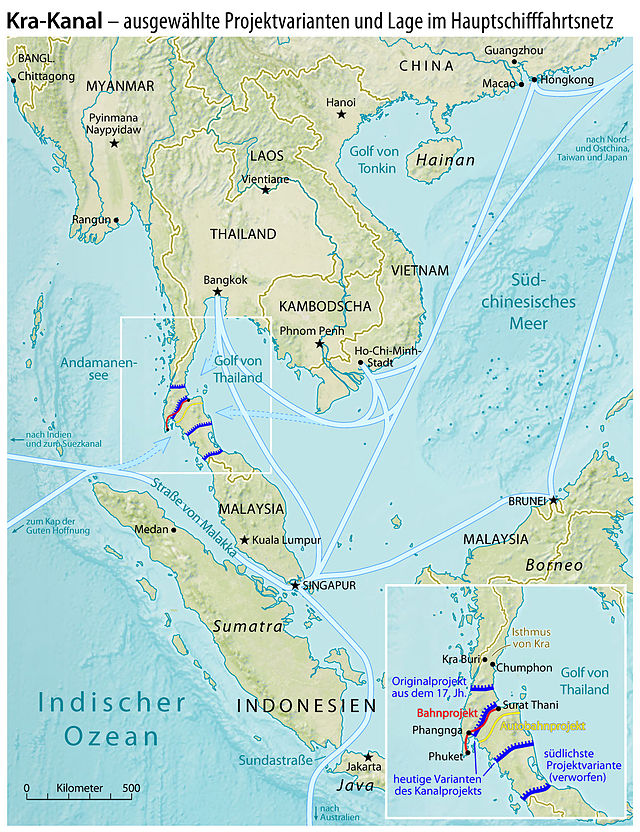Thailand plans to launch the Isthmus of Kra Canal

Growing calls are being heard regionally for the Thai government to speed up the reality of making the Kra Canal project happen. Pressure is growing for Thailand to step up work on the project, which stalled in recent years due to the country’s domestic political turmoil, is increasingly being seen as a means to boost to the economy as well as economies elsewhere in Asia.
The project – by far the largest development project ever undertaken in Asia – would build a Panama Canal-type short cut directly from the Indian Ocean to the South China Sea, something that would fundamentally change the face of the regions shipping.
Countries such as Singapore and Malaysia which have grown wealthy due to their location on the current route via the Straits of Malacca, are vehemently against the development of the Kra Canal as it would decimate their local port, shipping, logistics and related industries.
The prospect of cutting a channel through Thailand’s Kra Isthmus dates back several hundred years and was initially proposed in 1677 during the reign of Thailand’s King Narai the Great. The French began work on the canal but stopped shortly after, the British endorsed an engineering project, and the Japanese conducted feasibility studies. If realized, the Kra Canal would dwarf the Panama and Suez canals, would take at least ten years to construct, and is stated to be large enough to be visible from the moon.
Japan’s Global Infrastructure Fund, which is comprised of major Japanese companies, has studied the project and estimated it would cost US$2 0billion to build, and employ some three million people for the ten year construction. This is now attracting the attention of previously moribund Thai political wrangling over the future of the Kra Canal, as the country faces an economic downturn largely of its own political making rather than the problems caused by the global economic crisis.
The canal would generate an estimated annual trade turnover of some US$280 billion, and provide better access to about 1.2billion consumers that straddle the region within a radius of 2,400 kilometers. It would cut 1,000 kilometers off current shipping routes through the Straits of Malacca, saving about US$37,000 to US$120,000 to shipping companies per voyage in labor and fuel costs. Thailand would benefit enormously, as it would be projected immediately into a global hub for trading in commodities, currencies, financing, transshipment and similar services. A likely structure for the project may see the floating of a public company to raise funds, with the Thai government holding at least 51 percent, the public 29 percent and foreign investors a further 20 percent. The project needs less than 10 percent of the current Straits of Malacca shipping volume to break even.
China and Japan are strongly in favor of the Kra Canal as it significantly reduces cost and risks concerning Middle Eastern oil imports. It would also solve the navigation problem with the Straits of Malacca, which are silting and are not suitable for the new generation of giant oil tankers and currently route via Sumatra.
HEADLINES
- Do shipping markets want Biden or Trump for the win?
- All 18 crew safe after fire on Japanese-owned tanker off Singapore
- Singapore launching $44m co-investment initiative for maritime tech start-ups
- Cosco debuts Global Shipping Industry Chain Cooperation Initiative
- US warns of more shipping sanctions
- China continues seaport consolidation as Dalian offer goes unconditional